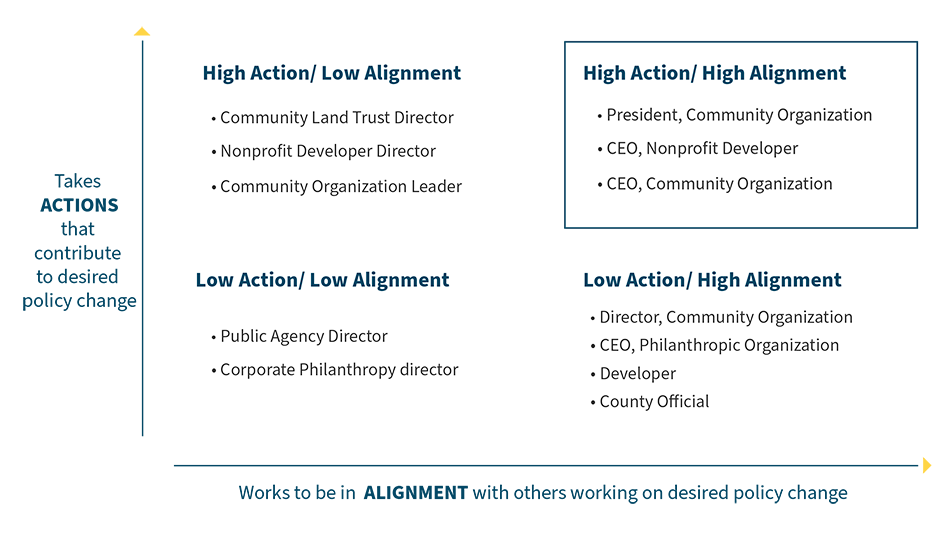Once you’ve identified who has the authority to make change, where they stand on the issue, and what incentives and constraints they are navigating, you’ll need to identify who can push them where you need them to go.
The diagram below will help you assess how aligned your community partners are with your strategy and how likely they are to take action. Partners in high alignment are people aligned with the core values of your efforts. High-action partners will get the job done. High-action/high-alignment are your strongest allies, but it’s also important to identify high-action adversaries, like a mobilized NIMBY leader or conservative council member, so you can strategize about how to manage them. Some partners may be aligned but unlikely to act for a variety of reasons. Other partners may be willing to act but are not sufficiently in alignment. And then there are always partners who are neither well aligned nor likely to act.
A lot of work in the public sector relies on soft power. Working back channels, going through side doors, and having off-the-record conversations can be essential to making change. Knowing where people sit in this diagram can help you keep information flowing, identify and shore up weak spots in your strategy, and keep your partners moving in the same direction.
Hot Tip
Remember to populate your diagram with specific people, not just organizations. People need to do the work of persuading other people to support your change.

Example

